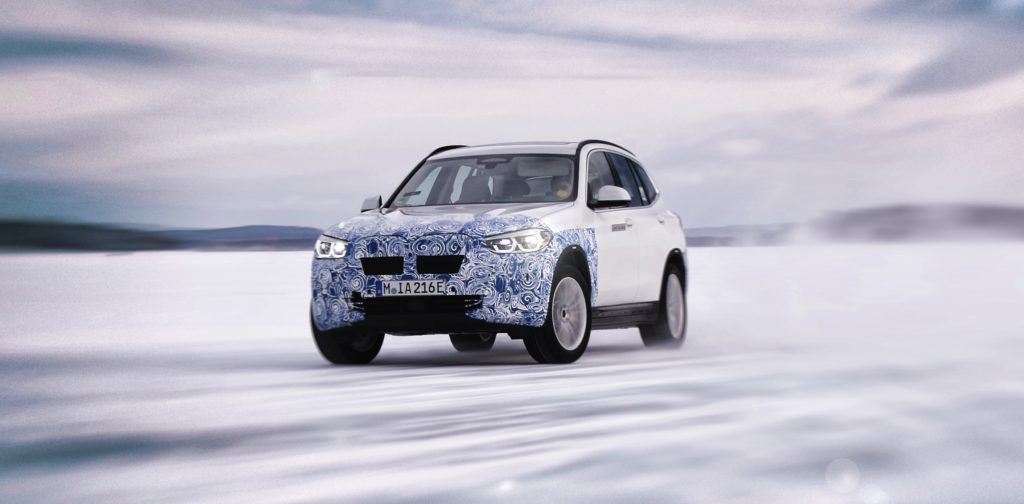BMW launches fifth-generation eDrive technology with the iX3
18 December 2019

18 December 2019
The new BMW iX3 Sports Activity Vehicle (SAV) will start production in 2020 and is the first model to feature the fifth generation of BMW Group’s ″eDrive″ technology. From 2021, this will also be deployed in the BMW i4 and the BMW iNEXT.
Both the drive system and the high-voltage battery unit have been completely redeveloped, giving the iX3 a range of more than 440 km in the WLTP test cycle, powered by a 74 kWh battery. The iX3 achieves this range, which is usually only possible for electric vehicles with larger (and therefore) heavier batteries, due to the favourable efficiency rating of the drive components and the high energy density of the high-voltage battery unit.
In preliminary data, the electric motor delivers a maximum power output of 210 kW/286 hp and torque of 400 Nm, according to a BMW statement. In 2020, the BMW X3 will become the brand’s first model available both with conventional petrol and diesel engines as well as plug-in hybrid and purely electric drive. The electric version, the iX3, will be produced by the BMW-Brilliance Automotive joint venture in Shenyang, China.
Reduced weight and raw-material usage
The vehicle’s fifth-generation eDrive technology comprises a drive unit in which the electric motor, system electronics and transmission are brought together into a central housing. As a result, the required installation space of the drive technology and its weight are considerably reduced. This means that there is no loss of space for passengers or in the boot, compared to the conventionally-powered versions of the BMW X3, and the ratio between motor output and weight of the drive system has improved by around 30% compared to the previous generation.
All the powertrain components used in the new eDrive technology were developed solely by the BMW Group, and the electric motor and the high-voltage batteries are produced in BMW-owned manufacturing facilities. Furthermore, the drive unit and the high-voltage battery unit are flexibly scalable in terms of power and energy content and can thus be used in various vehicle concepts and segments.
A new construction method used for the electric motor in the iX3 eliminates the need for rare earth materials, and BMW engineers were able to reduce the share of cobalt contained in the battery by about two thirds. Cobalt – and lithium – are, for the first time, purchased by BMW directly and then handed over to the producer of the battery cells.
Cobalt is a key component in the production of batteries for electronic devices and electric vehicles. More than 60% of cobalt is mined in the Democratic Republic of Congo, which has raised fears among automakers over the security of supply. BMW Group, BASF SE, Samsung SDI and Samsung Electronics have launched the ″Cobalt for Development″ pilot project, aimed at improving working conditions at a cobalt mine in the African nation.
The reduction in cobalt usage is especially timely for BMW as several major technology companies, including electric-vehicle specialist Tesla, are facing a class-action lawsuit over the serious injuries and deaths of child workers while mining the material.